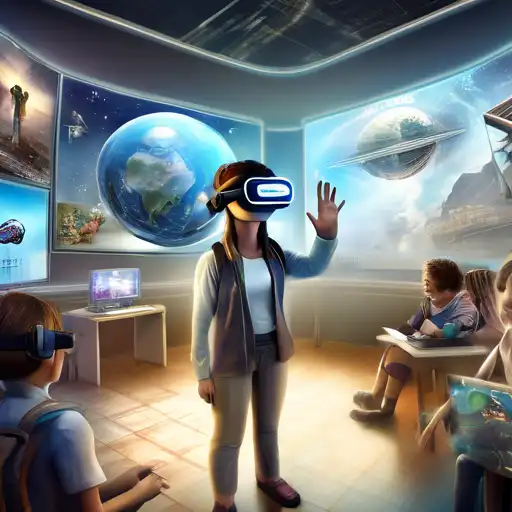Introduction to Virtual Reality in Education
Virtual Reality (VR) is rapidly transforming the educational landscape, offering immersive learning experiences that were once unimaginable. This technology enables students to explore historical sites, dissect virtual frogs, or even travel through space, all from the safety of their classroom. The potential of VR in education is boundless, promising to make learning more engaging, interactive, and effective.
The Benefits of VR in Learning
VR in education offers numerous benefits, including enhanced engagement, improved retention rates, and the ability to simulate real-world scenarios. Students can practice surgeries, explore ancient civilizations, or conduct complex scientific experiments in a risk-free environment. This hands-on approach to learning fosters a deeper understanding of the subject matter.
- Engagement: VR captures students' attention like no other medium, making learning fun and interactive.
- Retention: Immersive experiences help students retain information longer.
- Accessibility: VR makes education more accessible to students with disabilities or those in remote locations.
Challenges and Considerations
Despite its benefits, integrating VR into education comes with challenges. The cost of VR equipment and the need for technical support can be prohibitive for some institutions. Additionally, there's a learning curve for both teachers and students to effectively use this technology. However, as VR becomes more mainstream, these barriers are expected to diminish.
Future Prospects of VR in Education
The future of VR in education is bright, with advancements in technology making it more affordable and accessible. Innovations such as augmented reality (AR) and mixed reality (MR) are further expanding the possibilities for immersive learning. As educators continue to explore these tools, VR is set to become a staple in classrooms worldwide.
Implementing VR in Your Classroom
For educators interested in incorporating VR into their teaching, start small. Utilize free or low-cost VR apps to introduce students to the technology. Collaborate with other teachers to share resources and best practices. Most importantly, focus on how VR can enhance learning outcomes, not just as a novelty.
Virtual Reality is not just the next frontier in education; it's a revolutionary tool that's reshaping how we teach and learn. By embracing VR, educators can provide students with unparalleled learning experiences that prepare them for the future.
